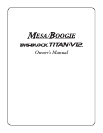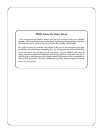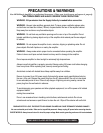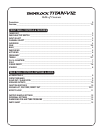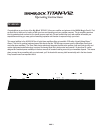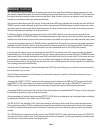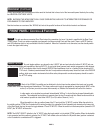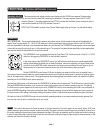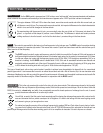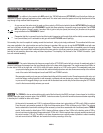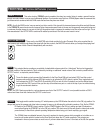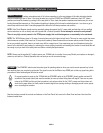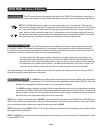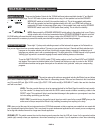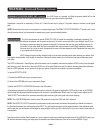
PAGE 2
The TITAN doesn’t rest on the laurels of its massive power alone, Tone, versatility and unlimited shaping power abound in the
dual channel footswitchable preamp. Two identical all-tube preamp channels taken from our intuitive Big Block 750 are voiced such
that minimal shaping is needed to achieve a warm musical blend. When it’s time to craft your own signature sound, this preamp
can take you anywhere you wish to go quickly and effortlessly.
This tone control stack features two MID controls. A wide band passive MID works magically with the wide-band active BASS and
TREBLE controls to create a balanced, spatial blend, while a semi-parametric MID allows frequency specific shaping over a wide
range that covers low, mid and high mid/low treble frequencies. This array is simple to use, yet provides all the shaping power you
will need while keeping the tweaking to an inspiring minimum.
In addition to the more traditional gain stages, each channel of the TITAN features an all-tube overdrive stage with its own
separate OVERDRIVE and MASTER controls. This footswitchable feature brings everything we’ve learned building high gain guitar
amplifiers over three decades to focus on bass guitar and creates an incredible new frontier of truly usable overdriven bass sounds.
To access the two preamp channels, the TITAN provides a switchable Dual Configuration Input scheme that greatly expands the
application of all this Tone. Select either a Single Instrument/Dual Channel configuration or Dual Instrument/Dual Channel opera-
tion. These choices allow the player to decide how best to use the footswitchable power of the TITAN’s two preamps.
In the first scenario a player can use one instrument into either INPUT and dedicate each of the preamp channels to a different
footswitchable sound. These might have different EQ and gain settings, perhaps with one channel utilizing the OVERDRIVE mode
(which doesn’t have to be heavily distorted with some of the best sounds found at the furry onset of clip). For the bassist who uses
two instruments, or doubles on keyboard bass, you can dedicate each Channel to a different instrument and footswitch between
them for hot-swap access on the gig. Either way you choose to roll, the TITAN achieves the ultimate integration of incredible tube
Tone, shocking power and musical flexibility.
And finally, each Channel features a dedicated footswitchable SOLO level control allowing you to crank it up and step out when it’s
time to showcase a part or a solo.
The Rear Panel neatly showcases all the features you would come to expect in a amplifier of this caliber and ensures all your
interfacing needs are covered.
A balanced XLR DIRECT OUTPUT captures the entire preamp signal and features both PRE and POST options while its’ dedi-
cated DIRECT LEVEL control allows you to match levels to all types of consoles. There is also a GROUND LIFT switch for the
DIRECT circuit to help ensure a quiet signal when connecting to consoles that may have different ground references.
A dedicated TUNER circuit with both Front and Rear Panel Outputs features a footswitchable MUTE function for silent tuning when
the footswitch is connected in stage or studio environments.
Outboard processing is handled through the series EFFECTS LOOP which is activated when the Hard Bypass feature is defeated
by selecting the ON position of the Effects Loop BYPASS switch.
A SLAVE OUTPUT and dedicated LEVEL control are provided for capturing the entire sound of the preamp and power section.
This is useful when another TITAN or additional power amplifiers are needed for large (coliseum size) venues. In this scenario
the SLAVE is the perfect feed signal because it will pass on everything you do to the sound and give you control over the signal
strength.
The TITAN delivers its massive power to the ground via the SPEAKER OUTPUT section which features heavy duty SPEAK-ON
connectors that lock the cable in place. These connectors also function with standard ¼” phone type connectors for speaker enclo-
sures that don’t incorporate this system as a design feature.
Overview: (Continued)



